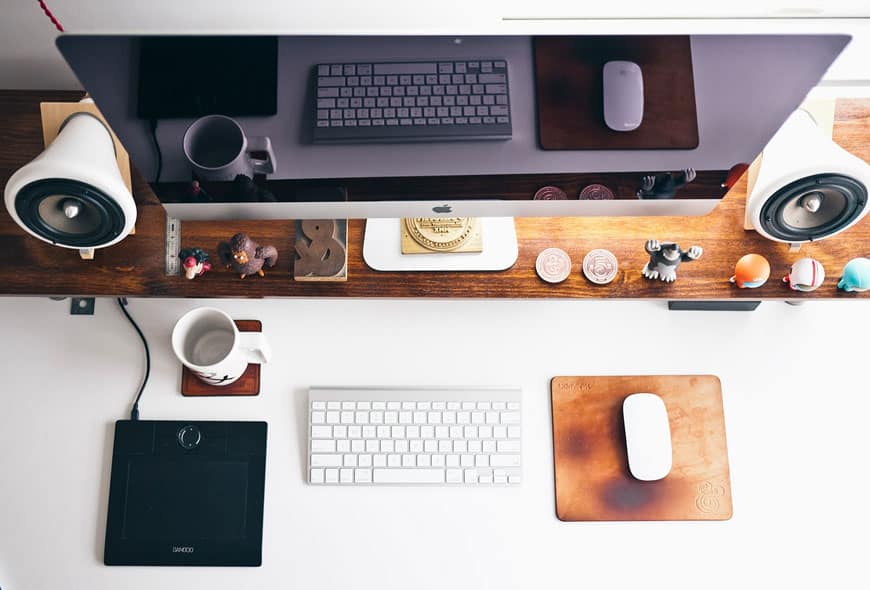Millennials join the workforce in entry-level positions: sitting in cubicles and working in close quarters. But how do they move up?
According to an observation of Facebook’s work environment by the Harvard Business Review, “Greater organizational productivity suggests that meeting an employee’s need for autonomy can influence motivation and performance.”
In other words, offices that give organizational freedom to their employees lead to better work performance – and ultimately more profit. For the motivated employee, here are a few ways you can tweak your office to make it the most productive.
Productivity leads to advancement
Personalization
Dr. Craig Knight, chartered psychologist and research fellow at the University of Exeter, has researched the affect on personalized workspaces with office productivity.
“The best space that people can be the most productive – and the happiest – is the space where they can recognize themselves… where they can recognize their own identity,” he said. “The worst space that you can put people into is the “lean” stigma space, which is tightly controlled and there is nothing on your desk but what is required in your job.”
The lean principle, a Japanese workspace organization method, consists of 5 S’s: seiri (sort), seiton (straighten), seiso (shine), seiketsu (standardize), and shitsuke (sustain). Many corporations around the world (e.g Essay Zoo) utilize this principle when systemizing their office spaces, including locker safety protocols, and oftentimes it does more harm than good.
Whether your personality is expressed in photographs, art or framed autographs, make sure the space you are working in reflects who you are, and not just who you work for. You need to be comfortable to be yourself; if you need glasses, wear them. If you work better standing up, then get a standing desk. Don’t be afraid to be yourself and to express who you are.
De-cluttering
There is a difference between extreme order and a clean space. Staffing firm Adecco surveyed 1,000 workers on whether or not employees judged the cleanliness of their coworker’s office space and their characteristics as a reflection on their cleanliness. Fifty seven percent of them said they judged.
As simple as it may sound, paper, trash, and old files add up quickly and take up valuable space that an office needs. Gwynnae Byrd, business efficiency consultant at Good 4 Business, wants every office worker to address this question before beginning work—“Look at your space, what are you going to do in this space?”
Arrange your office materials so they coincide with your furniture; your space needs to be maintained and efficient to ensure better concentration. “Make a decision about a piece of paper right away,” she said. “If you have a filing system, I recommend purging your files once a year to make decisions about what you do and do not need.”
Keeping your workspace organized will likely help you decrease the physical clutter that leads to distractions from important projects. “And always take out the trash,” Byrd said.
Think Green
Green Plants for Green Buildings, a non-profit organization in Ukiah, CA, focuses on communicating the aesthetic, environmental, productivity and health benefits of plants in built environments.
Mary Golden, an advocacy incubator and executive administrator at Green Plants for Green Buildings, believes that performance can be measured in terms of reduced absenteeism and increased ‘presenteeism,’ a term she defined as the engagement of workers in the office setting. Environments with plants have reduced levels of cortisol, a stress hormone, which makes for less tension in the workplace, Golden said.
Terrapin Bright Green LLC, a New York based design firm, encourages incorporating nature into work environments. The firm published an essay in 2012, “The Economics of Biophilia,” to introduce the financial impact nature can have on work environments: “The concept of biophilia implies that humans hold a biological need for connection with nature on physical, mental, and social levels, and that this connection affects our personal well-being, productivity, and societal relationships.”
Biophilic design is a term used to describe built environments that engage humans with nature: “access to nature, a garden, views or access to green space increase efficiency by six percent,” Golden said. “They reduce stress, increase ideation and employee moods.”
On a smaller scale, pick out a plant or bouquet of flowers you like – whether because it smells nice, adds color to your space, or looks pretty.
According to the Human Spaces Report Biophilic Design in the Workplace, natural elements such as stone, light, and wildlife have been shown to increase performance in workplaces internationally. And the best part is, nature does not have to cost a thing.
By altering your work environment to fit your needs, keep it clean, and incorporate natural elements, you are bound to enhance more than just your work performance, but the quality of your work day. Address these elements to make your workspace a more enjoyable place – and feel better doing it.



